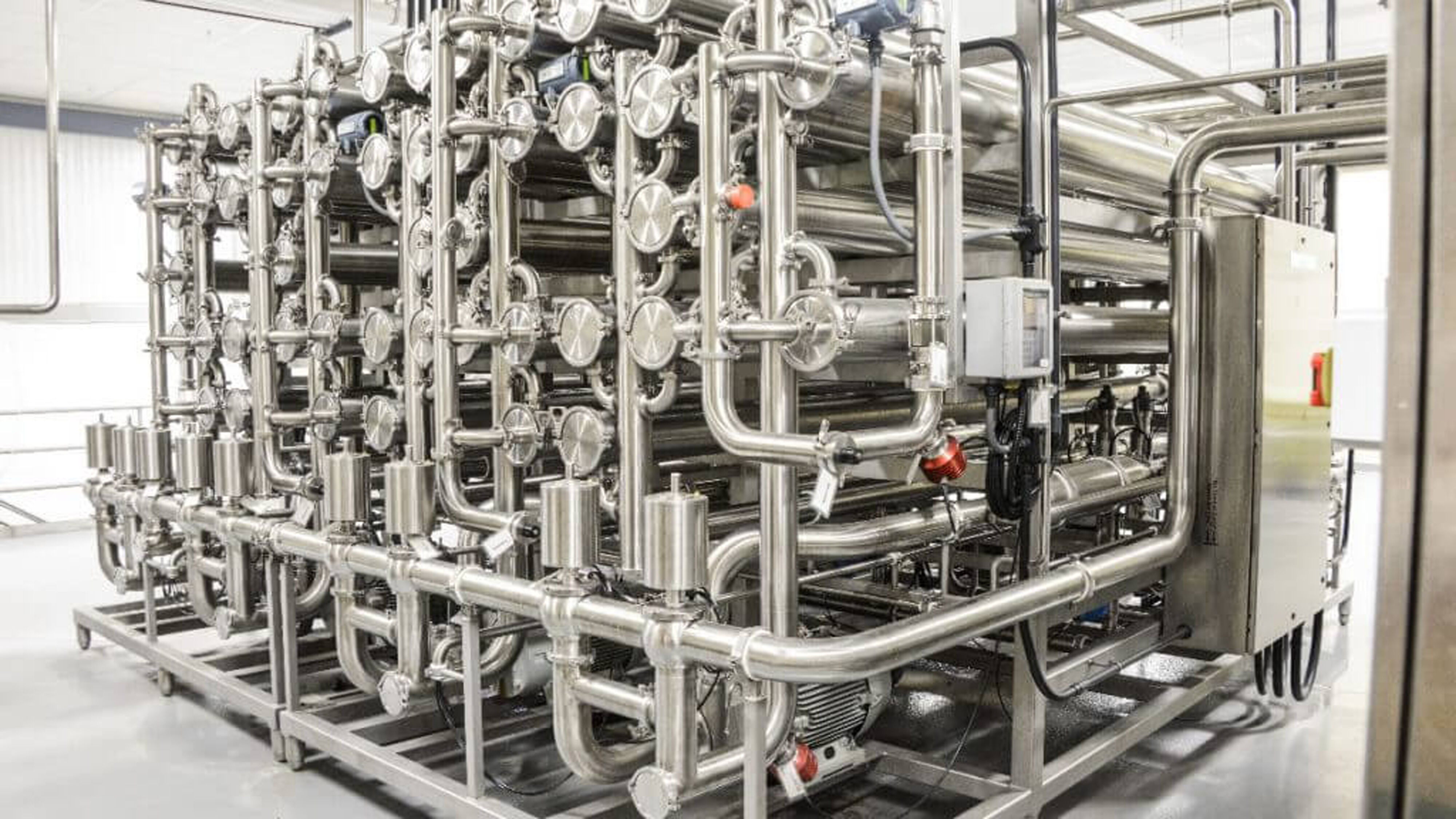

Machines for separating a liquid into permeate and retentate using filter elements.
By pumping the liquid around over the filter under a specific (transmembrane) pressure, there is a specific flow of (flux) of the finer substances to the permeate. The coarser elements in the liquid remain in the retentate. The pore size in the filter determines which substances are allowed through. The smaller the pore size, the higher the pressure in the system has to be. There are various types of filters; (polymer) spiral-wound tube modules, plate and frame modules, and ceramic filters. Highly filtered liquids are milk, whey, brine etc.
Conversion to a greater or smaller surface area by the addition or removal of filter tubes or plates. Potential to modify capacity and thickening level. Direct link to pasteurisation installation. Technology for cream cheese production, amongst others.
Assembly of complete filtration units. A unit consists of: Stainless steel frame. Feed and circulation pumps. Filter and balance vat. 1, 2, 3 or 4 recirculation loops included: Recirculation pump, valves, temperature and pressure transmitter or indicator, a minimum of one flow indicator for permeate, the filter module itself.
Possible: Cooler or heater (tube heat exchanger). The retentate system flow transmitter and control system to regulate outgoing flow. For CIP, dispensing pumps and potential flow transmitter for the cleaning fluids.
The advantage of frame mounting is that testing has already been completed. Just position the machine and begin without high installation costs.
If you are looking for a filtration unit, go to Machines wanted.
Do you have a filtration unit for sale? Go to Sell your machines.